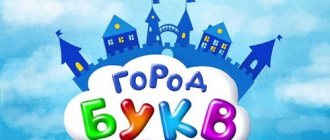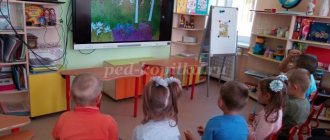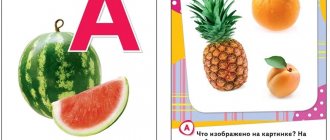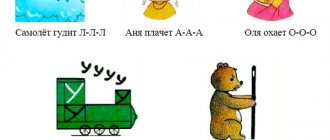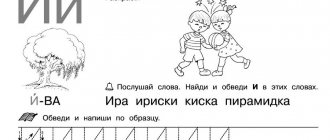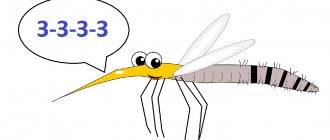Learning letters: where to start
In what order should I learn the letters? Do you need to learn the alphabet? Should I start with vowels or consonants?
Let's be clear, so:
1. There is no need to learn letters in alphabetical order.
2. Don’t learn letters mixed up: vowels and consonants.
3. Be the first to learn 10 letters representing vowel sounds with your child.
We wrote in detail about how to learn 10 vowels in 5 lessons. The technique is really very effective and simple. Any mother can do it.
4. It is better to learn consonants after vowels.
5. Name the sounds, not how the letter is pronounced in the alphabet.
Review of popular techniques
There are many methods for learning letters with children. Choose the one that you like best (after all, a lot depends on the interest and passion of the parent) and that will respond to the baby. The option of combining several approaches is not excluded.
● Classical technique . The order of learning letters is presented in any primer. Learning begins with 10 vowel sounds. Simple-sounding consonants are gradually added. Soft sign, hard sign - last, since their purpose is most difficult for children to understand.
● Montessori method . It is based on the involvement of three sensory channels in the learning process - hearing, tactile sensations, visual perception. Children not only examine and voice the materials, but also touch them with their fingers.
● Polyakov’s methodology is clearly divided into lessons. In the first five lessons, the child masters 10 vowels, and they are studied in pairs: a-ya, u-yu, o-yo, e-e, i-y. In 18 lessons, the child masters the alphabet and reading letters*. By the end of the training (70 lessons), children read books.
● Chaplygin's technique . Strictly speaking, this is not even a method for learning letters. With the help of a set of special cubes, children immediately learn to read warehouses*. As part of the manual, some of the cubes are combined in pairs, installed on a platform and rotate around their axis, the rest are familiar wooden reading cubes. Exercises with these cubes are effective for children over three years old.
*Warehouse is a combination of no more than two letters. A warehouse is not equal to a syllable. Example, the word “syllable” - 1 syllable, “s-lo-g” - 3 warehouses.
● Associative techniques (Methodology of Pyatibratova, Yulia Tarakanova). Reception using the association method. The essence of the technique is to evoke and consolidate in the child an association of each drawing with the movement and sound that denotes it or, for example, with a picture.
How to teach a child the alphabet at 3-4 years old
If you decide to teach your child letters at 3 years old, remember that nothing can be done through force, only games, only entertaining exercises and NO FORCE. These recommendations are relevant for any age, because you do not want to develop an unwillingness to learn and go to school in the future.
- Don't expect your child to remember many letters right away. Don't set out to learn the entire alphabet; it will take time.
- Give your child new material twice a week, and on the remaining days, repeat and consolidate what you have learned.
- With a child 3-4 years old, it is enough to exercise 2-7 minutes a day.
- Learn vowels in pairs, so it will be easier for your child to remember: A - Z, O - Yo, U-Yu, Y - I, E - E.
- Before introducing your child to consonants and starting to learn to read, make sure that knowledge of all vowels has been brought to automaticity.
Training rules
- Play is almost the only opportunity to teach at this age. He must be passionate about what he is studying. Therefore, it is necessary to use various games and aids to make learning the alphabet for young children 4 years old easy and simple.
- Classes should be short, no more than 15 minutes, but quite frequent.
- Training can begin if the child’s oral speech is sufficiently developed. If not, then you need to use the services of a speech therapist.
- If your child suddenly loses interest in activities, then something is going wrong. We need to find out.
- We must remember that a child has every right not to know something and not be able to do something!
Collaborative learning through play is very effective - You cannot compare your child with others. Assuming that someone is better will not produce good results. Each baby is an individual!
- Of course, an individual approach is needed.
- Studying if your child is in a bad mood is a waste of time.
Understanding that moderation and rationality are important in everything will lead to the fact that the baby will master the alphabet quite quickly.
You cannot demand anything beyond the bounds of your child or force him to learn letters.
He should be interested, he should be passionate about the process and want these activities. And if this is not the case, then maybe it’s worth postponing the lessons or trying another, more suitable method? The main thing to remember is that children learn best by playing! leave a comment
How to learn consonants: a game technique
There are many more consonants than vowels. Studying them will require more patience, effort and time. But everything will work out if you strictly follow the recommendations and take your time.
Prepare a table. Each table consists of six rows. On the top line, write or type hard consonants in blue and soft consonants in green. On the remaining lines, write short open syllables.
| BY | |
| BO | BYO |
| BOO | BYU |
| WOULD | BI |
| BE | BE |
| VYa | |
| IN | WHAT |
| VU | VYU |
| YOU | IN AND |
| VE | BE |
| GY | |
| GO | GYO |
| GU | GY |
| Gee | GI |
| GE | GE |
| DY | |
| BEFORE | DE |
| DU | DU |
| YES | DI |
| DE | DE |
| ZY | |
| ZO | ZY |
| memory | ZY |
| PS | ZI |
| ZE | WE |
| LA | |
| LO | LE |
| LU | Best Junior |
| LY | LI |
| LE | LE |
- Together with your child, sing songs of vowel sounds: in a rough low voice A, O, U, Y, E and in a high thin voice I, E, Yu, I, E.
- Say the consonants in the top line of the chart clearly. Work with 6 tables in each lesson.
IMPORTANT! Make sure that the child and you yourself pronounce the consonants clearly, so that no extraneous vowels Y or I . If the child gets used to saying D y, S y instead of the pure sounds D , S , then he will read incorrectly. The most difficult things to pronounce are the pure sounds B, V, G, D; B, B, G, D. The rest are easier, especially the deaf. Z and ZH correctly for example, is very simple. Ask your child: “How does a big mosquito buzz? Z-Z-Z. No, not Z s, but Z-Z-Z! The mosquito does not know how to say Zy , it does Z-Z-Z . How does a small mosquito buzz? ZZ-ZZ-ZZ . Komarik does not know how to say Z and, he does Z-Z-Z-Z . This is what we call these letters: Z-Z-Z and ZZ-ZZ-Z .”
- Sing the syllables in the same way as you did with the vowels.
- b in the tables and tell them that it is called a “soft sign.” Remind him of its name from time to time.
The letter b does not indicate a sound, but only INDICATES the softness of the consonant.
- Write Y . Name what this sound sounds like. Give examples of words that begin with this sound: iodine, yogurt, yogi.
the very name of the letter “ And short” later when he learns the alphabet. From time to time, remind your child about this letter by PRONING IT WITH A SOUND.
- Return to these tables several times a day and sing the warehouses with your child. Do this regularly.
- When you see that the child is doing everything correctly, replace the 2 tables with two new ones.
| MY | |
| MO | MIO |
| MU | Manchester United |
| WE | MI |
| ME | ME |
| AE | |
| BUT | NOT |
| WELL | Nude |
| WE | NI |
| NE | NOT |
The technique is the same. Sing all 6 tables daily with your child. As a result, the child will repeat the old ones and learn 2 new letters.
- Again replace the 2 tables with two new ones, etc.
If you stick to the plan “new things 2 times a week, repeat the rest of the days,” your child will learn 32 letters of the Russian alphabet in a month. Ъ to your child later, when he begins to read and encounters this letter in words.
IMPORTANT! In the Russian language there are twin sounds and warehouses: ZH-ZH, ZH-ZHYO, SH-SH, SHO-SHYO, CH-CH, CHO-CHE, SHCH-SHCH, SHCHO-SHCHYO, TSY-QI . They are spelled differently, but sound the same! Be sure to draw your child's attention to this.
Games for learning the alphabet
The first rule of learning the alphabet: learn letters one at a time!
Don't forget, each letter is made up of visually similar elements. If you try to teach your child several letters at a time, he may become confused. Learn the letters one by one. One lesson - one letter.
The second rule of learning the alphabet: take your time!
Give your child enough time for each letter. Plan 1-2 lessons for each new letter. Organize the lesson in a way that is interesting to your child using games.
Expert Tips: How to Learn the Alphabet
Parents are constantly looking for new, quick ways to learn the alphabet with their child, but fast does not mean quality.
Additional Information! For a comfortable study, you should not forget about the peculiarities of the physiology and psychology of children (age and characteristics of their thinking).
Baby studying
Why teach your child the alphabet?
The alphabet is the basis of all languages. This is a strict sequential construction of letters, which is the key to all documents and books.
Knowing the alphabet will do nothing for a small child. He can easily memorize it, but he will not learn to read. It is better to leave the alphabet for elementary school, where it is needed, and learn the letters with your child without a strict sequence.
At what age should children already know all their letters?
The required level of brain development for reading is usually formed by 5 years, less often by 4-5. Therefore, there is no point in trying to force a child to read at an earlier age. It is better to broaden your horizons, develop speech and pronunciation, teach you how to ask questions correctly and teach you to give answers.
Taking into account age characteristics when learning about letters
In young children, the visual-effective type of thinking dominates, and upon reaching the age of five, the brain will begin to actively perceive iconic images and abstract presentation of information.
Note! By the age of 4, a child must learn basic knowledge for a comfortable future life. He focuses his attention on social connection with the world, so it is not recommended to burden him with unnecessary and complex information, bringing him to tears.
Learning the alphabet
Any activity with your baby is a fun game
Kids cannot concentrate on one activity for more than 10-15 minutes, so the duration should be limited, otherwise attention will be scattered and the child will stop learning new information.
A standard academic lesson is not suitable for children, so you should try to present any learning as an unobtrusive game that will be interesting to him. It is better to use a variety of tasks:
- poetry;
- songs;
- tongue twisters and riddles.
Note! This will provide the child with immersion in the process and facilitate the perception of new knowledge.
Cubes
If you don’t have time to make cards yourself, then bright cubes with pictures for each letter will come to the rescue. This is a quick and familiar way to teach a child to memorize the letters of the alphabet. Nowadays you can find a wide variety of cubes: colorful, funny, soft, wooden or plastic.
With cubes, you can also come up with a variety of games for memorizing letters at home, which will help awaken an interest in learning the alphabet and reading in a three- to four-year-old child.
Children's coloring pages
There are plenty of such materials for teaching a child letters, and they are varied. There are coloring books where you need to color in the letters, and there are those where you need to connect the dots to make a letter. As a rule, each exercise is accompanied by a funny rhyme in order to quickly and better remember the material covered. In a word, the choice is up to the parents.
Of course, cards and magnetic alphabets are time-tested methods and auxiliary materials, but if you want to add variety to your child’s usual activities, then alternative and fun ways to teach your child letters will come to the rescue.
Associations
This game can add variety to activities with cubes or cards. For example, the letter “F” looks like a “bug” - you can add antennae and eyes to it on a card, or invite the child to do it himself.
The letter “D” can become a “house”, acquire a painted window and a pipe. This fun method can help not only quickly learn the alphabet, but also develop the creativity of a preschooler.
However, there are a number of pitfalls here. Teachers working with preschoolers note that in this case there is a risk of learning not the sound, but the proposed association itself, in which the letter “D” turns into the letter “house”. Therefore, this method will be good in combination, as a pleasant relief after “standard” learning the alphabet.
Playing with fingers and shadow
Showing letters with your fingers is an entertaining game where both the child and the parent can be the leader. For example, a baby shows a letter with his fingers, and his mother tries to guess this letter. And vice versa. In addition, you can arrange a real shadow theater by guessing the letter from the shadow of folded fingers.
These methods and techniques can be used separately or together, successfully complementing each other. It is important for a parent not only to teach the child the alphabet, but also, most importantly, not to discourage the child’s desire to independently explore the world, to instill in him an interest in learning, reading and writing.
- share with your friends!
Magnetic alphabet
Another one of the most common ways to teach a child letters. Surely many young parents had such magnetic boards when they were children.
You can work with the magnetic alphabet, just like with cards: each time, attaching a letter to the board, show it to the child and clearly pronounce it, vowels in a sing-song manner, consonants - clearly pronouncing their sound. After the child has memorized the vowels and consonants, you can move on to learning the alphabetic sequence and syllables.

